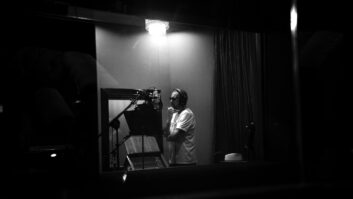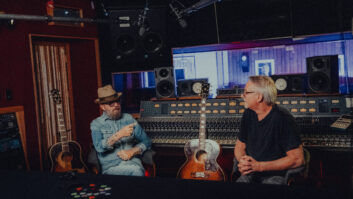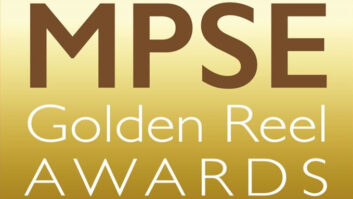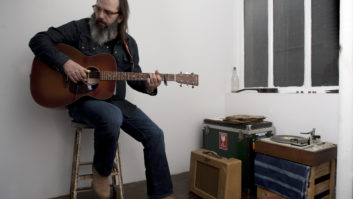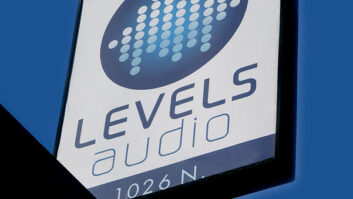
Miranda Lambert, Angaleena Presley, Ashley Monroe
Performing the title track of their debut, Hell on Heels, for the first time, Lambert and collaborators Angaleena Presley and Ashley Monroe had the A-listers clapping along. Standing side by side, they traded vocal leads on the verses, and flashed their gorgeous harmonies on the chorus of a bad-ass song about unrepentant gold-diggers: “I’m hell on heels/Say what you will/I done made the devil a deal/He made me pretty/He made me smart/And I’m gonna break me a million hearts.”
Hell on Heels had plenty of attitude and a bit more of a traditional country feel than Lambert’s terrific solo albums. Arrangements were tailor-made to showcase the three women’s powerful voices, as singers and songwriters. The album went to Number One on the country chart and 5 on the Billboard 200, so it’s no surprise that a lot of buzz is already building around the trio’s follow-up, Annie Up.
Annie Up was made after the artists had toured a good deal, performing together and separately, coalescing more and more as a group, and writing a whole new batch of songs that explore themes from temptation to marital strife to staying sober to the futility of a “beauty” regime (the tongue-in-cheek tender ballad “Being Pretty Ain’t Pretty”).
Producing this record were Frank Liddell, Glenn Worf and Chuck Ainlay, who were also part of the production team (with Mike Wrucke) behind Hell on Heels. Ainlay also engineered.
“Knowing them and how much fun they have, we chose a studio to work in that had a traditional vibe about it and was just a nice space to be in,” he says. “With these girls, the lounge is a very important thing.”
Ainlay tracked the project to Nuendo at Ronnie’s Place, Ronnie Milsap’s old studio (now owned by Black River Entertainment), which offers a comfy lounge, a bar, and a nice division of space that let most of the group hang together in the tracking room.
“The owners had actually redone the studio, sort of at the request of myself and Frank, for another project that didn’t materialize, but it turned out to be the perfect place to do the Annies,” Ainlay says. “I really wanted to make it comfortable for them as a group singing live. I wanted to have them out on the main floor where they could see each other and feed off of each other, and the rest of the bandmembers could feed off of that energy, as opposed to putting everyone in booths.
“The thing that helped was, above the control room is this room where they used to cut strings on Ronnie Milsap records,” Ainlay continues. “It’s all wood and it had risers and a balcony looking down into the studio—so a conductor could feed off the band and see the string players. I had them tear out the risers but leave the wood floor, and I put the drums up there. So, [drummer] Fred Eltringham was the only one who wasn’t right in the midst of the girls, but I put a video camera and a flat screen TV up there so he could see what was going on.”

As a co-producer and the bassist on the floor, Worf also appreciated the studio layout: “I did many sessions in this studio before it was refurbished, and I have fond memories attached to it,” Worf says. “And with the updates, Ronnie’s can compete with anything on the market, in my book anyway. I particularly liked the fact that we were able to put my two bass amps—a 1964 Fender Bassman and ’64 Ampeg B-15—side by side in what is usually the piano booth. Many studios simply don’t have the isolation for that to happen anymore.”
Ainlay was given guitar-and-vocal demos of most of the songs in advance, but band arrangements developed in the studio. “We didn’t want any preconceived ideas going in,” Ainlay says. “So for the most part, we’d get Angaleena or Ashley to play guitar, and the girls would sing as a trio live to the musicians, and then we’d write a chart and talk, and we’d build the song from there.”
Another task during pre-production was choosing the right vocal chains for the Annies: Lambert’s edgy but agile voice; Monroe’s sweet, high-lonesome sound; and Presley’s soft, throaty one.
“We spent a day with each one of the girls, trying a bunch of choice mics that we had brought over from Blackbird Rentals,” Ainlay recalls. “We ended up using [Neumann] U 47s on Ashley and Miranda, and a 149 on Angaleena. She’s got a thicker voice, and the 149 maintains the warmth but gives it more presence to punch the top out. The vocal chain was a Neve 1073 pre through a Fredenstein 660 tube compressor on Miranda and Ashley, and the Fredenstein 676 mic pre through a Tube-Tech CL1A on Angaleena.”
The three singers were situated in a triangle, several feet apart out in the middle of the room so they could see each other at all times. “We got a nice oriental carpet and some couches around and table lamps. It was a great vibe just for running a song down,” Ainlay says. “A lot of the vocals that ended up on the album were tracked with the band, but we’d also take two or three more passes of them singing together after we’d get a take, and then I’d have each of them sing individually to get some clean passes. There was definitely an energy when they were all singing together that I don’t think we could have gotten if we’d just recorded each vocal by itself, or with the girls isolated from each other.”
Guitar work on the album was handled by Guthrie Trapp, the electric guitarist in Monroe’s touring band, and acoustic/bluegrass master Randy Scruggs, whom Ainlay calls “one of the greatest acoustic guitar players on the planet.” However, Scruggs also showed he can shred with the best of them.

Miranda Lambert
“Whenever Frank, Chuck and I do a record together, I’ll usually bring along a handful of extra guitars and amplifiers,” Worf says. “On some impulse, I had thrown my old Telecaster in the car this time. We knew that Randy used to play quite a bit of electric guitar in years gone by; maybe that seed was planted somewhere in my mind when I brought that guitar along. In any case, when we took our first look at recording [the first single] ‘Hush Hush,’ it occurred to me to ask Randy if he’d mind playing electric instead of acoustic. He plugged into my Bassman, and it was a true revelation! His part really became the bedrock that ‘Hush Hush’ was built upon.
“I figure Randy is one of those guys that only ever says maybe 200 words per year,” Worf continues. “But he showed his alter-ego when he picked up that Tele!”
“Randy just eagerly jumped at that guitar,” Ainlay recalls. “Suddenly, he turned into Keith Richards!”
During the main tracking sessions, Trapp’s various amps (Vox, Fender, other custom models) were miked with an SM57 and a Royer R-121 up close, and an ADK Custom Shop CS-47J out in the room.
On Scruggs’ acoustic guitars, Ainlay set up a several different options: a pair of DPA 4011s in an x-y, an Audio-Technica 4050ST mic, an AKG C12, and an AEA R88 stereo mic. “On different songs, I chose different things,” Ainlay explains. “Some were different combinations, like the DPAs with the AEA backed off a bit to give some room ambience. But I don’t think you can get a bad guitar sound out of Randy Scruggs.”
Ainlay is also a fan of co-producer Worf’s bass playing: “He’s one of the greatest bass players we have in the studio business,” he says. “On him we were using a Millennia TD-1 as the direct path, and I had a Teletronix LA-2A on that. Then we had an ADK Custom Shop CS-49J on the Ampeg, and an [EV] RE20 on the Bassman.”

Ashley Monroe
Drum sounds on the record probably came less from any miking scheme than from that live loft space they used. “That room leant itself to a sound that I remember from when I first started in Nashville, when the drums were generally in a booth or a small room,” Ainlay recalls. “Drums weren’t given the space they’re given these days, and I think that kind of confined sound is interesting; it has a bit of a throwback quality to it.”
Ainlay mixed Annie Up on the SSL 9000 J in Backstage Studio, just across the alley—a room he’s no longer financially invested in, but still feels like home. “We mixed down to my ATR-100 1-inch machine that I run at 15 ips, and I just love that machine,” he says. “It so big and fat and warm-sounding. Fifteen ips retains the bottom end, but you get a bit of saturation. I mix almost everything to that, as well as back to Nuendo, but I’d say that 95 percent of the time, analog ends up winning at mastering.”
Like the technical approach Ainlay used in Ronnie’s Place, the Pistol Annies’ sound walks a line between throwback and modern. Annie Up has some real old-school twang and picking on tracks like “Damn Thing,” and vocal harmonies always take you back. But the album rocks, too, and has that awareness of decades of music that only comes with critical distance.
“There’s a traditional element to the group, but there’s no point in remaking a record that purely sounds dated,” Ainlay says. “We definitely were trying to represent the past, but make it as forward- and energetic-sounding as a modern record. We used a lot of compression that wouldn’t have been used back in the day. There’s a modern, expressive quality about their songwriting, and that has to be there sonically as well.”
“These young women share a wicked sense of humor, and there are some real tongue-in-cheek songs on both this album and their first one,” Worf says. “Some songs are quite irreverent, but some are heartbreakingly simple and beautiful. My hope is that our production, along with this sparse-yet-brilliant band, helped them capture their passion as well as their keen wit. We knew that these guys would play with a great knowledge of traditional country, but just like the girls, wouldn’t hesitate to dig for something new.”

